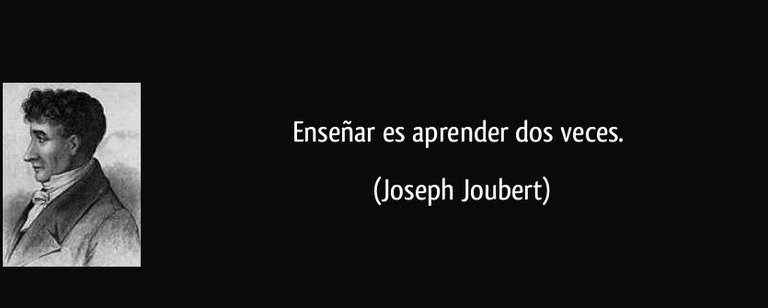
Do you know why the firstborn are more intelligent than their brothers?
In two studies published in the magazines Science and Intelligence, it was discovered that the highest intellectual quotient that first-born children usually have derives from the time they have spent throughout their lives teaching their younger siblings.
Surprised?
Whether you are first born or not, these studies give you one of the best advice you will receive in your student life: learning by teaching (or teaching later) makes us work harder to understand, remember and apply what we are studying.
These benefits are well known by teachers, as they themselves experience it in their day to day. According to John Nestojko, a psychologist at the University of Washington in San Luis, "when teachers prepare to teach, they tend to look for key points and structure information in a coherent way."
How to Learn Teaching
One of the most common ways to learn by teaching others is through younger students and, therefore, they need to learn things that we already know.
For example, the University of Pennsylvania launched an innovative cascade mentoring program, through which university computer students taught high school students, who in turn taught high school students.
When we are studying, we can deceive ourselves and think that we already know it, before we have really mastered it completely. If we do a couple of practical exercises and we do well, we already think we are ready for the exam. Teaching other people, however, eliminates this possibility of self-deception.

Advantages of learning by teaching
Some advantages of learning by teaching are the following:
Motivation and self-esteem: Students see that their learning has a practical purpose and serves to help and improve the lives of others. They feel useful and protagonists.
Empathy, observation and experimentation: Improves peer knowledge and understanding others' problems. The students put themselves in the place of the teacher, understanding better their role, their obligations and their responsibilities. The inversion of roles offers the student a different perspective of the classroom, the teacher, the classmates and even the center itself.
Interaction, communication, collaboration and dissemination: The need to communicate and explain knowledge helps to develop the communicative and social skills of the students, through active interaction and collaboration. On the other hand, at present, almost any type of initiative implies the use of new technologies, allowing the material created, the given explanation or the corrected activity to be easily transferable and, consequently, useful and reusable.
Depth: Learning is not passive or receptive, but becomes active, having to explain it later to others, so the student usually performs a more complete, detailed and comprehensive study of the contents, without memorizing, understanding to be able to explain and answer questions and doubts that may arise. In this way, an active methodology is used in which students are the protagonists, not only of their learning, but also of teaching.
SOURCE:
http://blog.tiching.com/cambiando-los-roles-ensenando-se-aprende-alumno-profesor/
https://www.goconqr.com/es/examtime/blog/aprender-ensenando/
And this is why separating classes based on age or levels is so stupid. Thank you for this article.